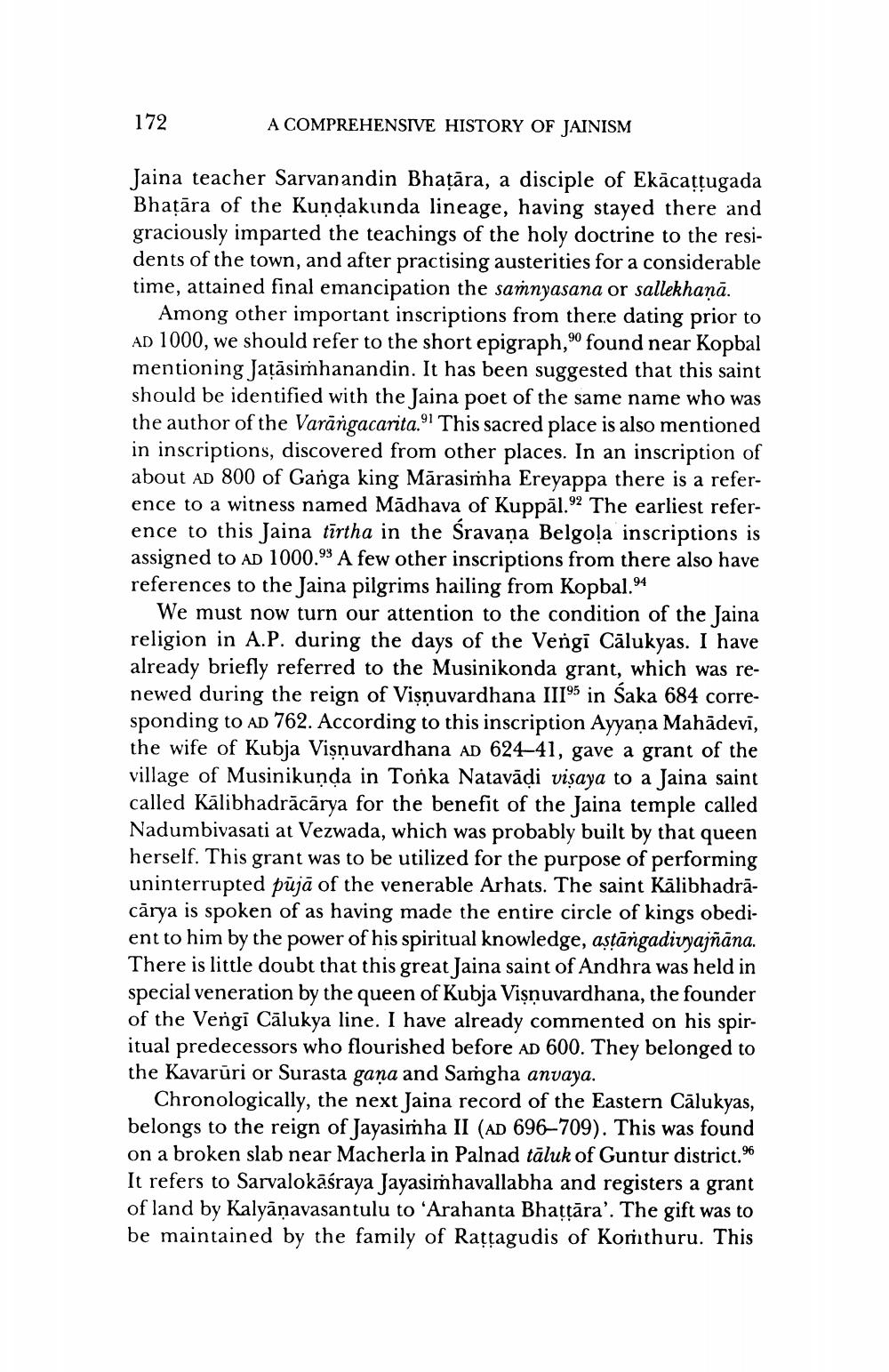________________
172
A COMPREHENSIVE HISTORY OF JAINISM
Jaina teacher Sarvanandin Bhatāra, a disciple of Ekācattugada Bhaṭāra of the Kundakunda lineage, having stayed there and graciously imparted the teachings of the holy doctrine to the residents of the town, and after practising austerities for a considerable time, attained final emancipation the samnyasana or sallekhaņā.
Among other important inscriptions from there dating prior to AD 1000, we should refer to the short epigraph," found near Kopbal mentioning Jațāsimhanandin. It has been suggested that this saint should be identified with the Jaina poet of the same name who was the author of the Varāngacarita.” This sacred place is also mentioned in inscriptions, discovered from other places. In an inscription of about AD 800 of Ganga king Mārasimha Ereyappa there is a reference to a witness named Madhava of Kuppāl.92 The earliest reference to this Jaina tirtha in the Sravana Belgola inscriptions is assigned to AD 1000.93 A few other inscriptions from there also have references to the Jaina pilgrims hailing from Kopbal.94
We must now turn our attention to the condition of the Jaina religion in A.P. during the days of the Vengi Cälukyas. I have already briefly referred to the Musinikonda grant, which was renewed during the reign of Visnuvardhana III95 in Saka 684 corresponding to AD 762. According to this inscription Ayyaņa Mahādevī, the wife of Kubja Visnuvardhana AD 624-41, gave a grant of the village of Musinikunda in Tonka Natavādi visaya to a Jaina saint called Kalibhadrācārya for the benefit of the Jaina temple called Nadumbivasati at Vezwada, which was probably built by that queen herself. This grant was to be utilized for the purpose of performing uninterrupted pūjā of the venerable Arhats. The saint Kālibhadrācārya is spoken of as having made the entire circle of kings obedient to him by the power of his spiritual knowledge, aștāngadivyajñāna. There is little doubt that this great Jaina saint of Andhra was held in special veneration by the queen of Kubja Vişnuvardhana, the founder of the Vengi Cālukya line. I have already commented on his spiritual predecessors who flourished before AD 600. They belonged to the Kavaruri or Surasta gana and Samgha anvaya.
Chronologically, the next Jaina record of the Eastern Cālukyas, belongs to the reign of Jayasimha II (AD 696–709). This was found on a broken slab near Macherla in Palnad tāluk of Guntur district.% It refers to Sarvalokāśraya Jayasimhavallabha and registers a grant of land by Kalyāṇavasantulu to ‘Arahanta Bhattāra'. The gift was to be maintained by the family of Rattagudis of Korithuru. This




